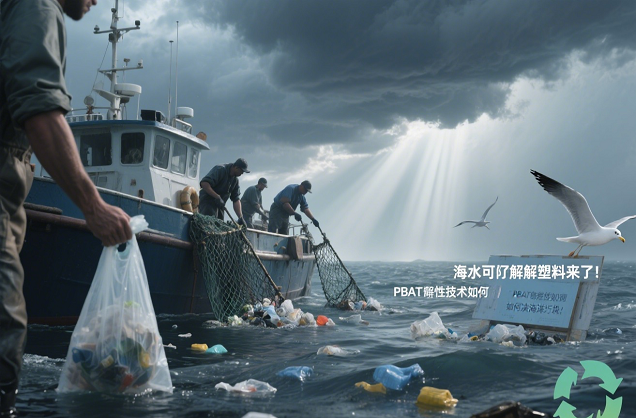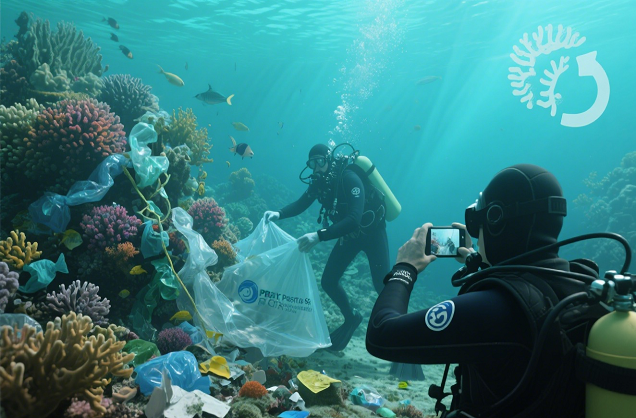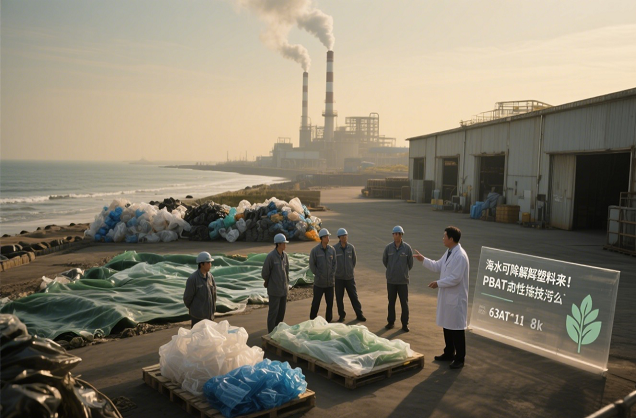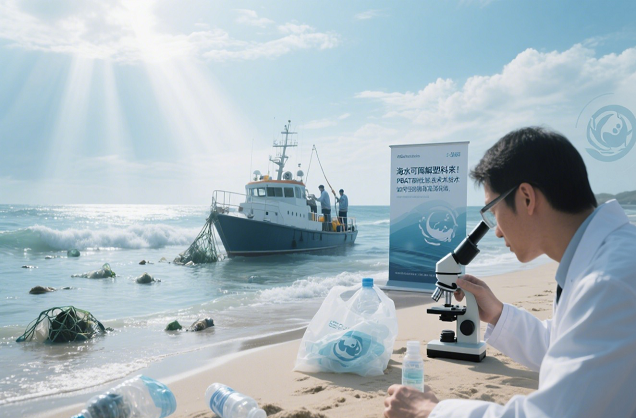Seawater degradable plastics are coming! How PBAT modification technology can solve marine pollution?
About 8 million tons of plastic waste flows into the ocean every year, and traditional polyethylene (PE) plastics take more than 400 years to decompose in the marine environment. This grim reality is being changed by an innovative technology - the birth of modified PBAT (polybutylene adipate/terephthalate) seawater degradable plastics.

I. Breakthroughs in PBAT marine degradation technology
1. Limitations of traditional PBAT marine degradation
- Degradation depends on specific microorganisms: ordinary PBAT needs microbial communities in soil or compost.
- Low efficiency in low temperature environment: the average temperature of seawater is 10-25℃, and the degradation rate is only 1/10 of that of composting environment.
- Salinity inhibition problem: Salinity of seawater (3.5%) will slow down the process of ester bond hydrolysis.
2. Three key technological breakthroughs
(1) Optimization of molecular structure
- Introducing hydrophilic groups (-COOH/-OH) to improve water permeability by 300%.
- Adjust the ratio of aromatic/aliphatic to 40:60 to balance strength and degradability.
- BASF Ecoflex® Marine Series achieved 90%+ seawater degradation rate in 12 months.
(2) Biostimulant Addition
- Seaweed extracts promote attachment of indigenous marine microorganisms
- Nanoscale Zinc Oxide Accelerates Photobiotic Synergistic Degradation
- Autophagy additive developed by Mitsubishi Chemical Japan increases degradation rate by 5 times
(3) Surface Microstructure Design
- Laser etching creates 20-50μm microporous structure.
- Laser etching to form 20-50μm microporous structure 15-fold increase in specific surface area, expanding the contact surface of microorganisms
- Cellular structure” film developed by CAS team shortens degradation cycle to 8 months in real-sea testing

II. Degradation mechanisms in the marine environment
1. Four-stage degradation process
1. Initial stage (0-2 months): Salt water penetration leads to dissolution of plasticizers and swelling of the material
2. Intermediate stage (2-6 months): UV and mechanical forces produce micro-cracks, specific surface area increases
3. later (6-12 months): colonization and decomposition by marine microbial communities (e.g. Alteromonas, Pseudomonas)
4. Final (12-18 months): complete mineralization to CO₂, water and biomass.
2. Measured data on key influencing factors
| Factors | Degradation Rate Impact | Technical Response Options |
|---------------|--------------|----------------------------|
| Temperature (10→25°C) | 4-fold acceleration | Addition of low-temperature active enzyme |
| Microbial density | Deterministic | Pre-inoculation with marine strains |
| UV intensity | Accelerated by 30-50% | Photosensitizer doping |
| Water movement | Mechanical fragmentation effects | Optimizing material toughness |

III. Practical Application Scenarios and Cases
1. Fishing equipment revolution
- Biodegradable Fishing: Samkang's products in South Korea have lost 90% of their strength in 18 months in real-sea tests.
- Fishing Tackle Packaging: Nichirei Group of Japan fully adopted seawater degradable PBAT packaging film.
- Cultured buoys: Wanhua Chemical (China) developed 24-month fully degradable buoys with only 15% higher cost.
2. Marine tourism products
- Disney Cruise Line switches to biodegradable tableware, reducing marine debris by 28 tons per year
- Hawaii Legislation Requires Visitor Products to be Certified ASTM D7081 Seawater Degradable
3. Coastal city solutions
- Bali, Indonesia Deploys Seawater-Degradable Trash Bags, Beach Plastic Reduced by 42%
- San Francisco Bay Area Pilots Biodegradable Ship Coatings that Automatically Decompose After 3 Years of Antifouling Effectiveness
IV. Performance comparison with traditional materials
1. Performance of key indicators
| Parameters | Modified PBAT | Traditional PE | Comparison of advantages |
|-----------------|---------------|-------------|----------------|
| Tensile Strength (MPa) | 18-22 | 20-25 | To meet the use requirements |
| Elongation at break(%) | 450-600 | 500-800 | Basically equivalent |
| Sea water degradation time | 12-18 months | 400 years + | Revolutionary breakthrough
| Production Cost($/kg) | 3.2-3.8 | 1.1-1.3 | Difference narrowed to within 3 times |
2. Ecotoxicity test results
- OECD 306: 28 days degradation products have no significant effect on sea urchin embryos.
- Microplastic production: only 0.3% of PE
- Bioaccumulation: no detectable enrichment of PBAT monomers in fish muscle

V. Development trends in the next five years
1. Direction of technological evolution
- Bio-based PBAT: the proportion of renewable raw materials increased to 70%+.
- Intelligent degradation: salinity/temperature-responsive materials enter the testing stage.
- Enhanced performance: 2025 target to realize full performance benchmarking with PE.
2. Market Forecast
- Market size in 2027: up to 5.4 billion dollars (CAGR 28%)
- Expansion of application areas: new scenarios such as ship coatings and temporary materials for marine engineering
- Regional hotspot: demand growth rate in Southeast Asian coastal countries will exceed 35
 Significant progress in PBAT/s
Significant progress in PBAT/s
 PLA/PBAT composite film degrad
PLA/PBAT composite film degrad
 A New Choice for Takeaway Pack
A New Choice for Takeaway Pack
 Significant progress in PBAT+s
Significant progress in PBAT+s
CONTACT
Add: Room 4006, No.1 Helong Yiheng Road, Baiyun District, Guangzhou City
Tel: +8613450255948
Wechat : +86-13450255948
Fax: +86-13450255948
E-mail: 13450255948@163.com








